Key takeaways
- Upcycling transforms waste materials into valuable items, fostering creativity and reducing environmental impact.
- Patagonia exemplifies sustainable practices through its Worn Wear program, encouraging repairs and extending product lifecycles.
- Supporting sustainable brands promotes quality, ethical labor practices, and greater consumer awareness of environmental issues.
- Upcycling influences fashion choices by inspiring individuality and a more mindful approach to clothing consumption.
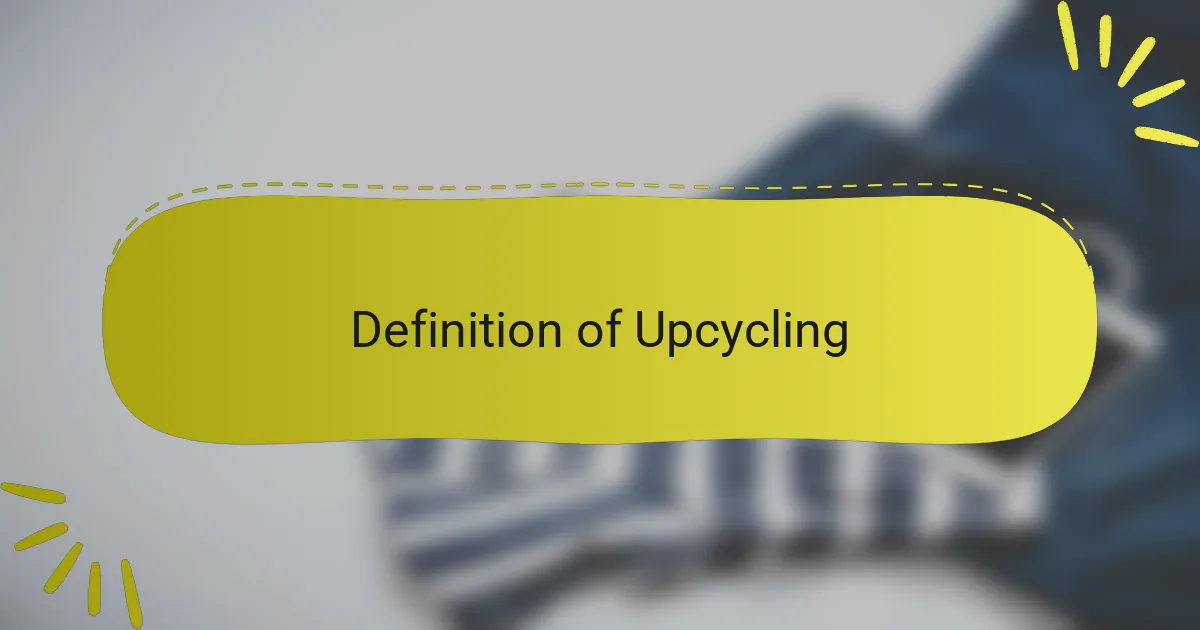
Definition of Upcycling
Upcycling is essentially the process of transforming waste materials or non-used products into new, valuable items. Instead of simply discarding something old, it gives new life to materials through creativity and innovation. Isn’t it inspiring to think about how something that might seem worthless can be reimagined into something beautiful and functional?
When I first encountered upcycling, it felt like a lightbulb went off in my mind. I remember looking at an old pair of jeans, wondering what could be done with them instead of just tossing them away. This perspective shift allowed me to see my belongings in a new light, fostering a sense of connection and purpose. It’s not just about reducing waste; it’s about honoring the story behind each item.
In many ways, upcycling challenges us to rethink our consumption habits. Why should we settle for fast fashion when we can engage in a creative process? It invites us to take responsibility for our impact on the environment while encouraging self-expression. The potential for innovation is endless, making every upcycling project a unique journey of discovery.
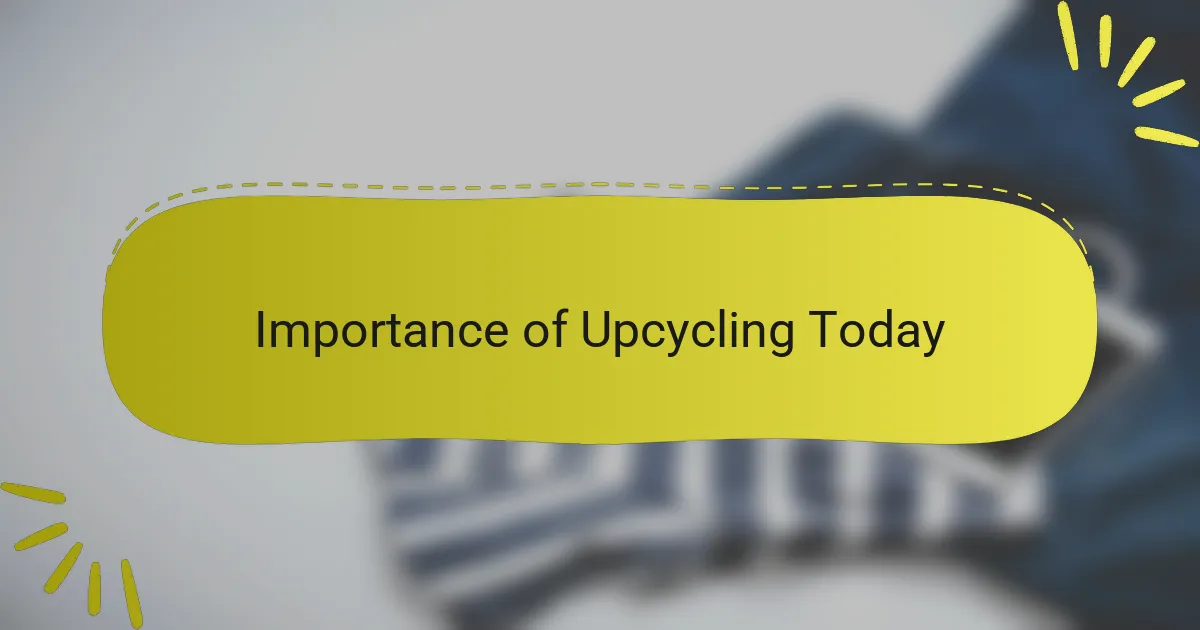
Importance of Upcycling Today
Upcycling has gained significant traction in recent years, especially as more people recognize the environmental challenges our planet faces. From my perspective, upcycling is not just about recycling materials; it’s about breathing new life into items that might otherwise end up in a landfill. I remember a time when I transformed an old Patagonia jacket into a stylish bag. It was rewarding not only to repurpose something I no longer used but also to make a unique piece that carried a story.
The importance of upcycling today can be summarized as follows:
- Reduces waste: Upcycling diverts materials from landfills, helping to reduce pollution and environmental degradation.
- Promotes sustainability: It encourages a circular economy, where products are reused instead of discarded, which can lessen our carbon footprint.
- Fosters creativity: Upcycling allows individuals to unleash their creativity, turning what might be considered trash into art or functional items.
- Raises awareness: By engaging in upcycling, consumers become more conscious of their consumption habits and the lifecycle of products.
- Supports ethical brands: Companies like Patagonia demonstrate that sustainable practices are not only feasible but can also be profitable, inspiring others to follow suit.
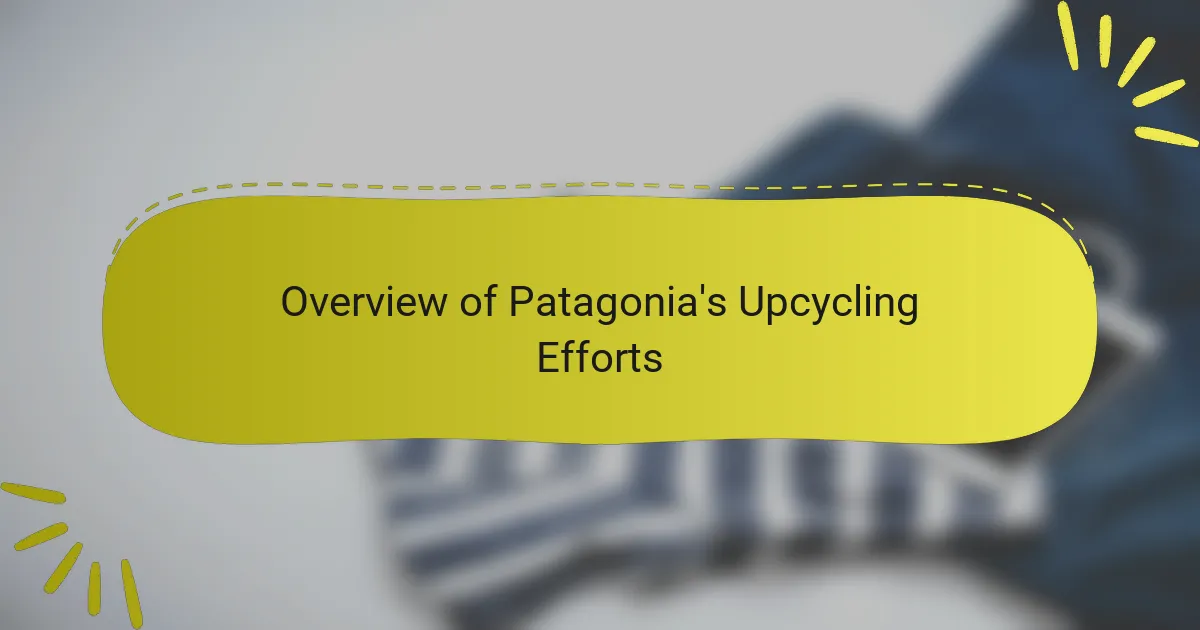
Overview of Patagonia’s Upcycling Efforts
Patagonia has long been a pioneer in the realm of sustainability, and their upcycling efforts exemplify this commitment. They transform worn-out clothing into new, functional pieces, which not only reduces waste but also extends the lifecycle of their products. I find it inspiring to see a brand that actively encourages customers to repair rather than replace their gear, fostering a deeper connection to the items we own.
The impact of upcycling reaches beyond the environment; it also resonates on a personal level. I’ve experienced the joy of giving my old Patagonia jackets a second life, turning them into something fresh and usable. This practice not only aligns with my values but also reinforces a sense of community and responsibility towards our planet.
| Aspect | Patagonia’s Upcycling Efforts |
|---|---|
| Focus | Reducing waste through creative reuse |
| Product Transformation | Old garments into new pieces |
| Consumer Engagement | Encouraging repairs and reselling |

Personal Experience with Patagonia Products
When I first encountered Patagonia’s products, I was struck by their quality and intentional design. I remember purchasing my first fleece jacket, which not only kept me warm on chilly hikes but also felt good to wear because I knew it was made with sustainable practices in mind. This connection to the environment really enhanced my experience with the brand.
I’ve also collected a few items from their Worn Wear program, where they encourage upcycling and repurposing. This initiative resonated with me deeply, as I’ve always believed that sustainability is not just about buying less but about valuing what we already have. Every time I wear a piece from that collection, I feel like I’m embracing a story – one that celebrates conservation.
- Patagonia products often combine durability with style, making them a pleasure to wear.
- The Worn Wear program encourages a culture of repair, rather than disposal.
- Each item carries a story that connects me to the outdoors, reminding me to cherish nature.
- Knowing I am supporting a brand committed to environmental justice enhances my overall satisfaction.
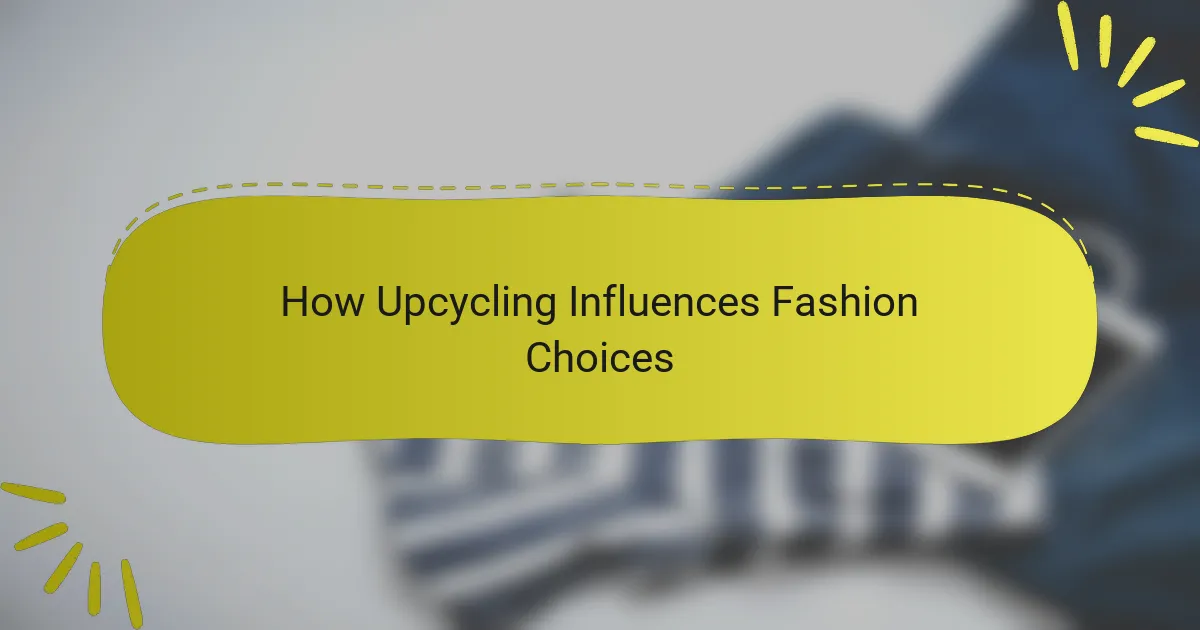
How Upcycling Influences Fashion Choices
Upcycling profoundly influences fashion choices by encouraging creativity and individuality. I’ve found that when I look at clothing, I no longer see just garments but instead potential transformations waiting to happen. Do you remember that old dress you never wear? It could become a stylish top or perhaps even a funky bag with just a bit of imagination and effort.
This shift in perspective also drives a more mindful approach to consumption. Every time I consider buying something new, I often reflect on my existing pieces and how they could be reimagined. The excitement of reinventing a favorite item brings a unique satisfaction that simply purchasing something new can’t match. I enjoy the thrill of creating a wardrobe that tells my story, capturing my values and experiences along the way.
Moreover, brands that embrace upcycling, like Patagonia, inspire consumers to think differently about their choices. I remember scrolling through their offerings and feeling a genuine connection to the idea that my purchases could have a positive impact on the environment. It makes me question whether I need another fast-fashion piece or if I can invest in something that supports sustainability and creativity—all while showcasing my unique style.
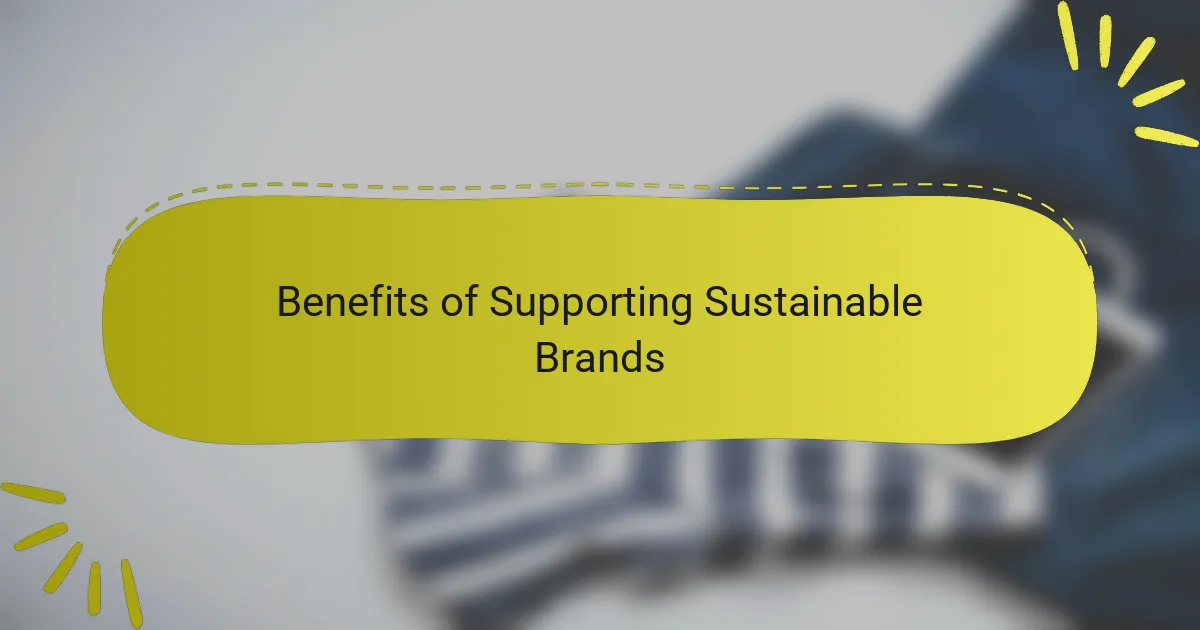
Benefits of Supporting Sustainable Brands
Supporting sustainable brands like Patagonia not only aligns with eco-conscious values but also promotes a healthier planet. I remember the warmth I felt when I purchased my first Patagonia jacket; knowing that it was made from recycled materials gave me a sense of pride. Every time I wear it, I feel I’m contributing to a larger movement toward sustainability.
Additionally, investing in sustainable brands often means choosing quality over quantity. This commitment helps reduce waste, which is a significant issue in the fashion industry. I see it as a powerful reminder that each purchase can make a difference. Here are some compelling benefits of supporting brands that prioritize sustainability:
- Environmental Impact: Less waste and pollution from sustainable production practices.
- Quality Products: Higher durability and longevity of clothing promote thoughtful consumption.
- Ethical Practices: Support for fair labor practices enhances the well-being of workers.
- Community Support: Sustainable brands often contribute back to communities through various initiatives.
- Consumer Awareness: Choosing these brands encourages more companies to adopt eco-friendly practices.